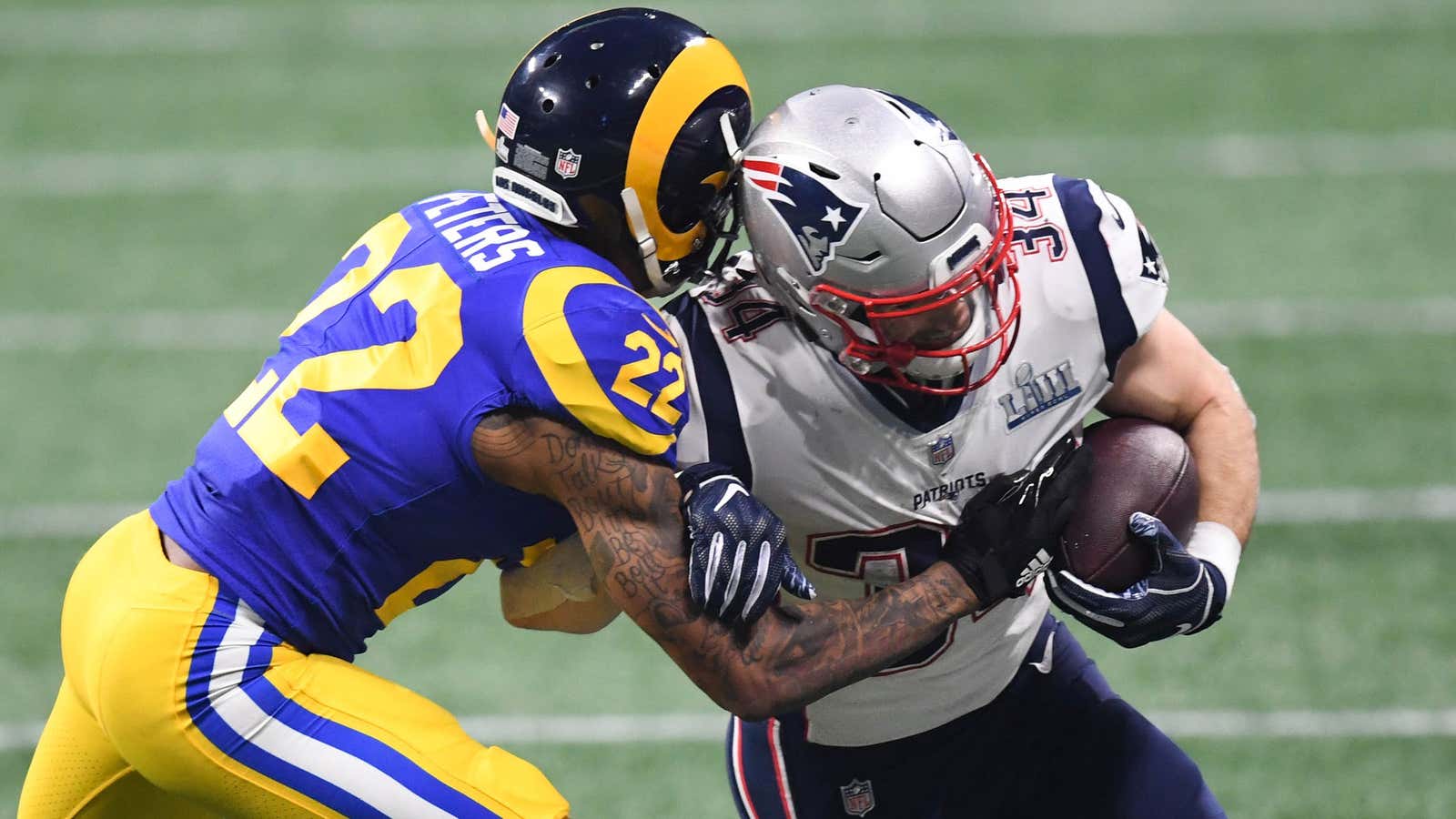Thirty years ago it would have been unimaginable, but thanks to a better understanding of data it’s about to happen for third time this decade.
According to most NFL experts, it is possible that in today’s NFL draft no running back will be taken in the first round. Although the draft is unpredictable, the University of Alabama’s Josh Jacobs seems like the only running back who might sneak in as a first-round pick this year. If he doesn’t make the cut, it would be only the third time since 1963 that a running back was not taken in the first round—the other two were 2013 and 2014. There were fewer teams in 1963, and thus fewer first-round picks, making the dearth of first-round running backs in recent years all the more remarkable.
It is part of a long running trend. In the late 1980s, over 20% of first round picks were running backs, compared with just 5% of picks over the past five years. No other position has seen a similar decline.
What led to what was once one of football’s most prestigious positions falling so out of favor? Mostly, teams got smart.
A heavy focus on running instead of passing the ball has long been a suboptimal strategy for NFL teams. Research from football analytics sites like Football Outsiders shows that teams get far more value from the typical pass play (higher risk, but also higher reward) than from a running one. Slowly, teams realized this, and increasingly emphasized passing. The share of plays dedicated to runs has fallen from almost 50% in the late 1980s to a little over 40% today. With fewer runs, the perceived value of having a particularly good running back fell.
NFL teams also figured out that running backs were pretty easily replaceable. Data analysis suggest that the difference between the best running back and the average backup simply isn’t that big. Even a truly great running back like the New York Giants’ Saquon Barkley can only make a relatively small difference in his team’s success: indeed, even with Barkley’s stellar play last season, his team’s offense was still below average.
To be successful, running backs rely on strong offensive linemen in front of them. Even a below-average back can rack up impressive statistics if he runs behind dominant blockers. At other positions, like quarterback and defensive end, the best players can make an impact even with subpar players around them. This is why running back is now one of the lowest-paid positions in the NFL.
These days, teams tend to draft running backs in the lower rounds of the draft, understanding that using valuable first round picks on the position isn’t wise. This is part of a larger trend of analytics becoming more influential in sports, upending traditional practices that survived for decades. Basketball teams now shoot more threes, baseball teams value defense more, and soccer teams ignore lucky goal scoring in ways no one would have imagined decades ago. Data analysis is not the best guide to decision-making in every field, but in sports—where wins and losses are clearly defined—it pays to follow the numbers.
